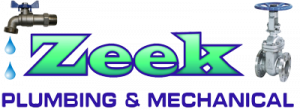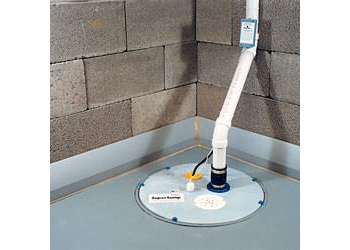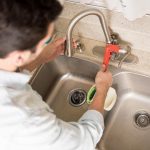Sump pumps are designed to pump water from your basement or home in the event there is a flood. You would rarely even notice they are in your home until they fail. Your basement will begin to fill with water with no way to pump it out. Flooding can cause thousands of dollars of damage to any home within minutes. There are several different types of sump pumps, and Zeek Plumbing will walk you through each.

Primary Sump Pumps
Primary sump pumps are the most common type found in residential homes. They can pump thousands of gallons per hour out of your basement/home. However, there are two separate types of primary pumps, Submersible and Pedestal pumps. As you may tell by the name, Submersible pumps are submersed in the pump pit. Pedestal pumps are positioned with the motor outside of the pump pit. All primary sump pumps run on electricity from an outlet, which in the event of a power outage, the pump will stop working. However, this topic leads directly into the next type of pump.
Battery Backup Sump Pumps
Battery back-up pumps will provide you with the added security in case of a power outage during a flood event. When the power kicks off, the pump will turn to the battery backup pump to continue pumping water from your home. They are not only used during a power outage, but can be used in the event the primary pump fails or cannot keep up with the amount of water it needs to pump. If you decide to purchase one, Zeek Plumbing recommends to confirm it is a “Battery backup” and not just a backup pump. Regular back-up sump pumps do not have a battery, and will need to be plugged into an outlet.
Water Powered Sump Pumps
Water powered sump pumps are also a great alternative for a backup pump. The pumps use the incoming water supply lines, so as long as your home is receiving water from your municipality or well, they will function properly. As soon as your primary pump stops working or needs assistance with a flood, the water powered pump will kick on. However, a back-flow preventer needs to be installed, and needs a yearly maintenance check to make sure it is functioning properly. Therefore, water powered sump pumps become one of the more expensive options in this list. Zeek Plumbing does not typically recommend installing water powered if the other options are available.
Combination Sump Pumps
As you may imagine, combination units are simply a primary pump and backup pump built in one. The primary is powered by the AC wall current. If the primary power does cut out, the backup will kick on, and start pumping water.
Sewage Ejector Pump
Sewage ejector pumps are most commonly installed in homes with bathrooms, laundry rooms, or other plumbing fixtures in the basement. They are only needed if the municipal sewer line running into the street is located above the plumbing fixtures. Most plumbing systems flow using gravity and need a sewage ejector pump to push water and waste up into the sewer line. A sewage pump requires a vent to be installed to maintain pressure when pumping and to filter out sewage gases. The vents are typically run into an existing vent or run out through the roof of your home.
Zeek Plumbing’s Recommendation
We typically recommend installing a primary sump pump with a battery backup pump. Most people do not think they need the backup. However, most problems we see are because the primary either loses power or cannot keep up with the amount of water it needs to pump. It is better to spend the money for a backup pump, then to fix the thousands of dollars of damage resulting from a basement flood. We do not recommend having a water powered sump pump due to the yearly maintenance needed and the costs associated. However, if you are ever interested in having a new sump pump installed or need to replace an older unit, please give our office a call at 866-635-0200. We will be more than happy to assist you with your decision making process.

Ryan has been a part of the Zeek Plumbing team since 2019, and has lived in Randolph, NJ his entire life.
He takes pride in taking care of the towns, the families, and the areas he grew up in!
Ryan has been the Treasurer and is currently on the Membership committee of a local BNI Chapter based out of Morris County, NJ in the networking group, BNI Main Street.






